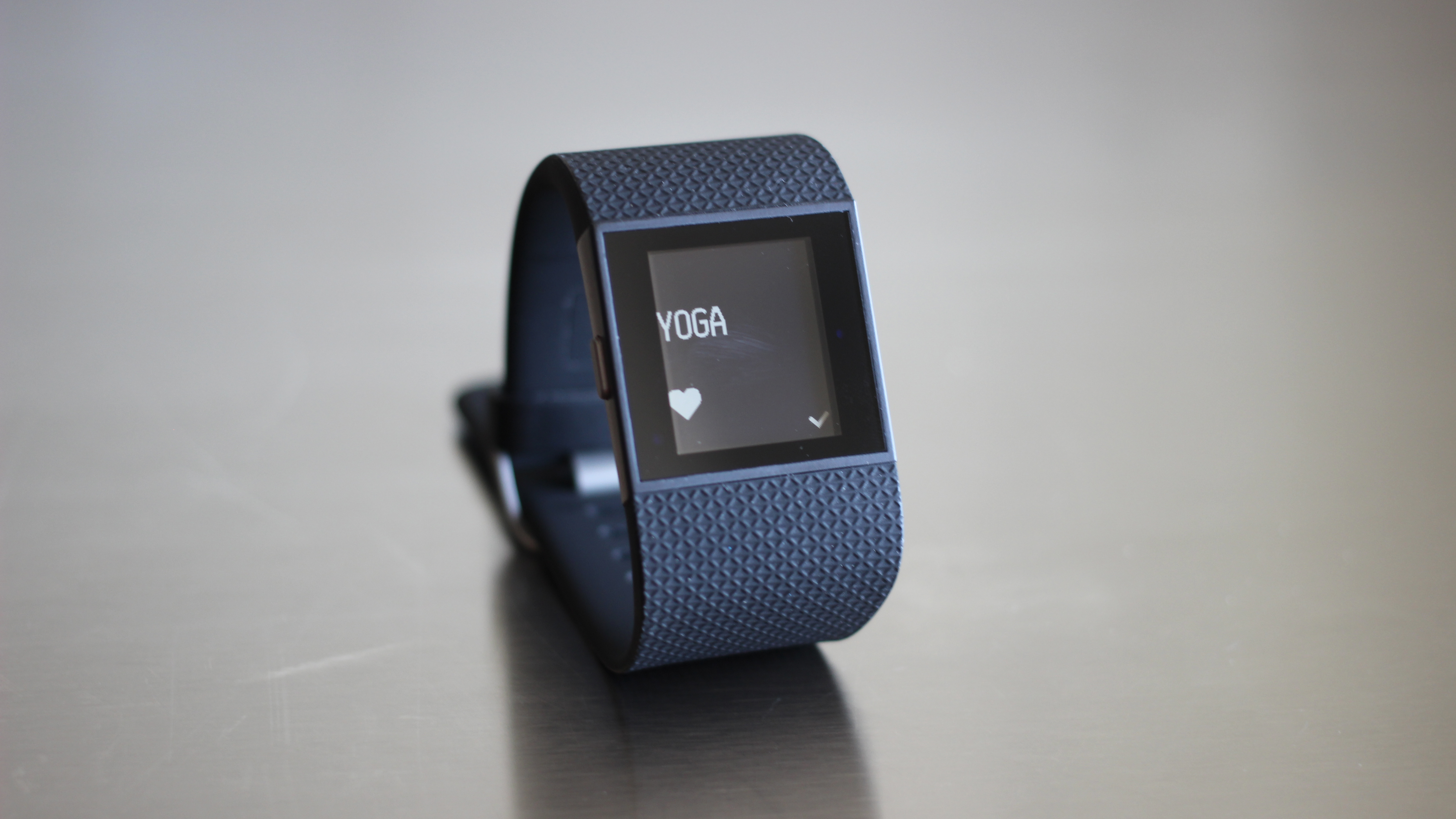Why you can trust TechRadar
Fitbit Surge is waterproof and according to the official specs, which list it at 5ATM, okay for a depth of 50 meters or 164 feet, it matches the Apple Watch 3, Pebble Time and Pebble Time Steel.

However, confusingly, the company still says while "it's rain and splash proof and can stand up to the sweatiest workout," owners should "remove before showering or swimming."
I didn't have any problem submerging my Fitbit Surge for a few minutes. It didn't brick my $250 gadget and will almost certainly survive lengthy, sweat-filled workouts or heavy rain.
Fitbit Surge battery life
Fitbit Surge excels in a lot of areas, but it falls behind its predecessors when it comes to battery life. That's expected given its large black-and-white LCD and new GPS capabilities.
The problem is that Fitbit promises its new "superwatch" can last seven days with heart rate monitoring and activity tracking enabled. It advises turning off GPS and music controls.
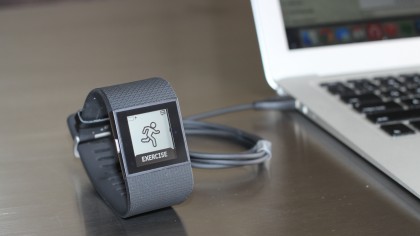
My Surge didn't live up to that stamina in tests. It gave me about four and a half days between charges before it quit, even when minimally using its GPS capabilities during the week.
Given the Apple Watch, every Android Wear watch and my phone require daily charging, that's more than acceptable. It takes about an hour and a half to recharge a Surge.
What's infuriating is that Fitbit Surge uses a proprietary charger - one that's different from the two other recently released Fitbits.
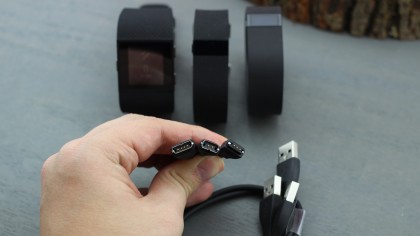
At first, I was excited to see that the Fitbit Charge used the same proprietary USB charger as the Fitbit Force. I had two of the same charger.
Then I got the Fitbit Charge HR, which had a slightly different charger, and then the Fitbit Surge, which had its own unique charger. What?
Yes, I now have three brand new Fitbits with three different chargers. The company lost its chance at creating a ubiquitous fitness charger among its ecosystem.
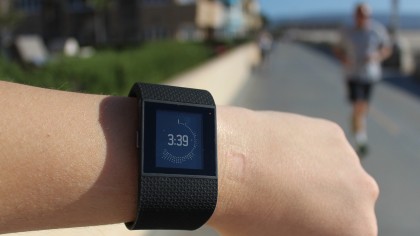
We liked
It's no longer the best of its brand but thanks to the ability to track GPS-mapped runs without a phone, control music on the run and check your heart rate in real time, this is still a pretty powerful Fitbit.
There's a lot going on within this sensor-filled fitness tracker, and it has a 1.25-inch display to prove that all the metrics are working at the same time your blood is pumping. Best of all, it syncs with newer Windows phones in addition to iOS and Android devices.
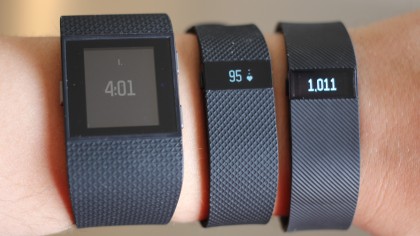
We disliked
Fitbit Surge tries to be a jack-of-all-trades, master of "run" but it falls short in every way. It's not as accurate as the Garmin's top-tier fitness trackers and not as subtle as an activity band. It's big, bulky and doesn't have all of the premium features to back up its size.
Its sleep tracking capabilities haven't evolved, the steps count is still inflated and the fact that this is the third recent Fitbit with the third proprietary charger is a joke. Why must they all be just a little bit different and incompatible with each other? I'd also ask for a color e-paper display instead of a black-and-white LCD, but the battery life is already shorter than advertised.
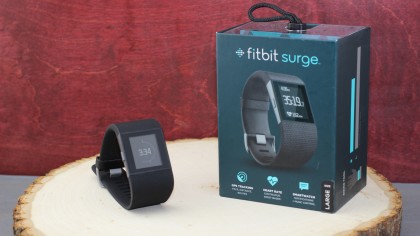
Final verdict
Fitbit Surge is meant for budget-conscious power users who are in need of a smarter running accessory. In this way, it runs laps around Fitbit's more casual wearables, like its Fitbit Flex or Fitbit Charge, thanks to GPS-mapped runs, basic music controls and smartwatch-like notifications.
The catch is that Surge is still designed to be worn on a daily basis. That doesn't work out, because it's shaped like a clunky running watch. It's significantly bigger than every other Fitbit and doesn't blend in with normal wear.
That's the price of having a built-in GPS, a touchscreen interface, a heart-rate monitor and automatic sleep tracking. Fitbit Surge is set up to fill the void between a fitness tracker and a real running watch. It does that, but is only recommended if you can't afford a more reliable Garmin or Polar running watch.
Current page: Waterproof, battery life and verdict
Prev Page Heart rate monitor, sleep and smartwatch features